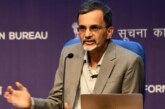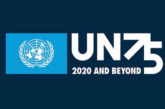 The UPA-II government has contemplated to roll out the direct cash transfer (DCT) scheme designed to provide subsidy and other welfare schemes to the desired beneficiaries by transferring money to their Aadhaar-enabled bank accounts from 1 January 2013. The reported objective of introducing this direct cash transfer scheme is to prevent leakages and corruption in implementation of social welfare related schemes. To begin with, 51 districts in 16 states have been identified for the roll out of the scheme.
The UPA-II government has contemplated to roll out the direct cash transfer (DCT) scheme designed to provide subsidy and other welfare schemes to the desired beneficiaries by transferring money to their Aadhaar-enabled bank accounts from 1 January 2013. The reported objective of introducing this direct cash transfer scheme is to prevent leakages and corruption in implementation of social welfare related schemes. To begin with, 51 districts in 16 states have been identified for the roll out of the scheme.
The DCT scheme had started in Alwar district of Rajasthan on a pilot basis in December 2011. The government had reportedly received complaints about direct cash transfer scheme for beneficiaries of kerosene oil subsidy in Alwar. Congress president Sonia Gandhi has strongly backed the Centre’s new Direct Benefit Transfer system that will ensure cash transfer directly in the hands of beneficiaries of various schemes, saying it is in line with many other “revolutionary” measures taken by the UPA.
While terming the direct cash transfer scheme as pure magic, Union Finance Minister P. Chidambaram says: “Earlier, when a Central ministry released funds, it could never ensure their delivery to the rightful last-mile beneficiary. Even if complaints were made, it took a long time for them to be redressed. However, with the direct benefits transfer scheme, money released from Delhi immediately reaches the bank account of the intended beneficiary. It is just like magic.”
The government claims that the entitlement/cash would reach the beneficiaries’ bank account directly and, hence, reduce corruption. But, the claims of the government have already been questioned both by people who never got the promised cash and, activists who point out to the high risks involved in such a fundamental shift.
But not everyone is convinced. Some state leaders have voiced their concerns about the scheme. West Bengal Chief Minister Mamata Banerjee has strongly opposed the Centre’s cash transfer scheme, saying the poor will not get the money as there is no mechanism to implement it. While talking to media persons in Parliament House in New Delhi on 17 December 2012, she said: “We don’t agree with the scheme. West Bengal never agreed for this. How will you transfer the cash? What is the mechanism? Where is the machinery? There must be some mechanism so that money can reach (the beneficiaries). Now also in the country, there are so many areas where there are no banks, no post offices. First, they (government) have to set up banks and post offices. They have to open accounts for all the people — from NREGA to all the social development programmes. Otherwise, the poor people won’t get their money.”
In a letter to Prime Minister Manmohan Singh, Chhattisgarh Chief Minister Raman Singh has said financial inclusion and availability of information technology infrastructure are preconditions to cash transfer and there are substantial problems in the state on both accounts. “It would also be difficult to fix the monthly cash subsidies in view of fluctuation in market prices.”
Dr Usha Ramanathan, who has worked extensively on the issue at the ongoing Right to Food campaign in Jantar Mantar, in a talk with CNN-IBN’s Rupashree Nanda on 13 December 2012, was scathing in her criticism of the direct cash transfer scheme which would rely heavily on Aadhaar/UID. Ramanathan says, ‘biometrics is both changing and undependable’, ‘banking correspondent system will be the new cause of corruption’, and ‘it is only about reducing cost to the State, people are damned’.
She disputes government’s claim that this would help to step corruption and that cash will be delivered to beneficiaries at their doorstep: “When they are saying that cash will be delivered, they are relying on banking correspondents.” According to her, Reserve Bank of India started this in 2006 and, in 2009 they issued a report admitting that the system of banking correspondents was a failure. The RBI gave five reasons why it had happened.
While lamenting that none of these issues have been addressed, she further adds: “So it is very plain that they are using this to dismantle the service structure. What I wonder is when sometimes there is evidence in writing on record publicly why is that being ignored? The banking correspondent system failed a long time ago and the banking correspondent system will be the new cause for corruption. They are creating agents, middlemen, agents on whom you have to depend. And who do you have to depend on?”
The bank account is the most important criterion for the cash transfers to work. But only 40 per cent of India’s population has bank accounts. The current banking network does not have the bandwidth to handle more accounts, and such a network cannot be built within a month, given that the first phase of cash transfers is slated to begin in January 2013.
Undoubtedly, the Centre has embarked on an ambitious journey. The danger lies in setting unrealistic deadlines driven by expediency and tarnishing an important reform in the process. Even if this DCT scheme is designed to address the large chunk of vote bank, it calls for capacity building of the people at the grassroots level so that the lowest of the low can reap its benefits. Without capacity building of the target beneficiaries, its very purpose would be frustrated.
Viewed in a broad spectrum, bulk of official social welfare schemes end in fiasco and those at the receiving end are deprived of the benefits for lack of capacity building of the implementing officials as well as the beneficiaries.



